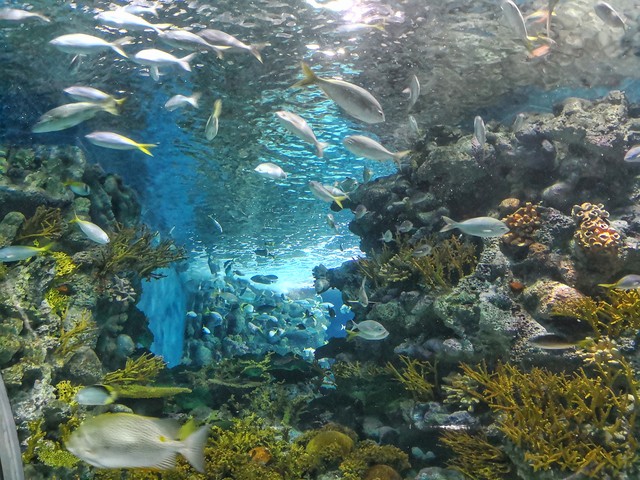Blogs

A member of the higher algae, about 1500 species, found in cold water along continental coasts and rare in fresh water. Its color depends on the ratio of brown to green, ranging from dark brown to olive green. The swollen balloons allow the photosynthetic part of the foliage to float on or near the surface of the water. Brown algae do not have single cells, they are all multicellular plants, the simplest being branched 褐藻素 功效filaments composed of single rows of cells, as in the order Ectomycorrhizae; among evolved species, there are differentiations similar to roots, stems and leaves, and some even have balloon structures. If kelp can help algae float on the sea surface, its internal tissues have epidermal, cortical and medullary differentiation, and its body size is generally thicker and can grow to more than 60 meters, forming a sea forest or sea of algae during mass reproduction, attracting countless marine organisms to gather and bringing rich marine resources.
Ocean bottom algae: brown algae
Brown algae are the advanced group of algae. Brown algae plants are multicellular. Simple ones are composed of single rows of cells with branched filaments; evolved species with similar differentiation of roots, stems and leaves, internal structures with differentiation of epidermal, cortical and medullary tissues, and even sieve-tube-like structures. The cell wall is divided into two layers, the inner layer consisting of cellulose and the outer layer consisting of alginate.1 to multiple color carriers, granular or small disc-shaped, containing chlorophylls a and c, carotenoids and several lutein. Because the content of lutein exceeds that of other pigments, the algae are tawny or dark brown in color. The swimming spores or gametes of brown algae have a pigment body, an eye spot and two unequal lengths of lateral flagella. The flagellum is long in the front and short in the back, the long flagellum has two rows of cilia and the short flagellum is smooth and cilia-free. In terms of pigmentation, brown algae generally contain a large amount of yellow-orange phycocyanin in addition to chlorophyll a, c, carotene, and lutein, so most of them are brown. Its photosynthetic products are essential oil, fucoidan starch and mannitol. Its cell wall is rich in fucoidan, which is gelatinous or viscous, and is often used in various food additives, or for industrial applications such as the textile industry and the rubber industry.
Marine bottom algae: brown algae
Kelp-like brown algae are mostly distributed in cold waters, and the sea around Taiwan is relatively warm, without huge kelp growth, but rich in Sargassum, small "Sargassum sea" is often formed in March and April. Sargassum, which grows 2-3 meters long, also entangles in the Devonian period, with about 250 genera and 1500 species of brown algae. In addition to a few species living in fresh water, most marine products, camp life, are the main components of the submarine forest. Some species reproduce nutritionally in a fractured manner. Asexual reproduction produces swimming spores and fixed spores. Sexual reproduction is pure, heterozygous or oviparous reproduction. Free spores and gametes have two lateral flagella of unequal length. Heteromorphic algae: their gametophytes and sporophytes are the same size and shape, such as water clouds and round algae.
Marine bottom algae: brown algae
Representative plants include the genus Exocarpus, which belongs to the same generation of the genus Exocarpus. The filamentous body consists of a row of cells. The plant body is divided into two parts, the lower creeping part, with cells uniseriate, irregular, rhizomatous, and attached to other objects. The upright part is filamentous, with luxuriant branching. The cells are mononucleate, banded or mostly discoid carriers. The gametophyte and sporophyte of Shuiyun have the same morphological structure. asexual reproduction of Shuiyun can be divided into unicellular sporangia and multicellular sporangia, both of which are located on the terminal cells of lateral branches. In sexual reproduction, the lateral branch apical cells of the gametophyte form a multicellular gametocyst. The two gametes of different algae are essentially the same size, and they combine to form a conidium, which immediately germinates to form a diploid sporophyte, similar in morphology and structure to the gametophyte. Kelps belong to different generations of the order Kelp.
Marine benthic algae: brown algae
The genus Pelvetia belongs to the order Nonsporophyta. The algae are brown, about 6-15 cm high, with a basal fixator, a conical disc-shaped body, a short flat cylindrical stalk in the middle, and bifurcate branches in the upper part. The phytoplankton of C. deerstalkii is diploid and can form a reproductive receptacle at the tip of the branch when reproducing. The reproductive receptacle has a stalk in the form of a long horn-shaped fruit with a distinct boil-like protrusion on the surface and an open cavity at the protrusion, called the reproductive nest, in which the female and male reproductive system organs - the oocyst and spermatophore - are produced. The oocyst is a single cell, which undergoes for the first meiotic division, or finally develops into a two eggs; the spermatophore extraction is also a single cell, which first undergoes analysis once through meiotic need division, and then undergoes corporate multiple mitotic divisions, forming the majority of our patients sperm. Mature spermatozoa and eggs develop into normal diploid plants after union.
Related article reading:
Eating seaweed is good for preventing gynecological diseases and for eating seaweed
How brown algae are formed
The way to get rid of brown algae
Posted in: Health
Topics:
health
Be the first person to like this.






